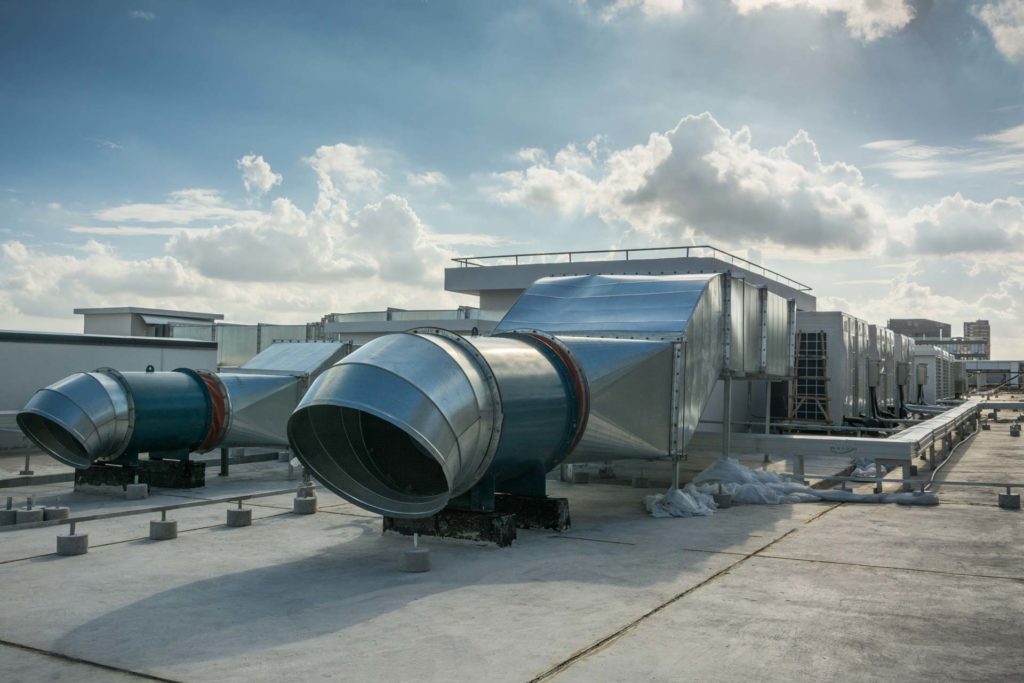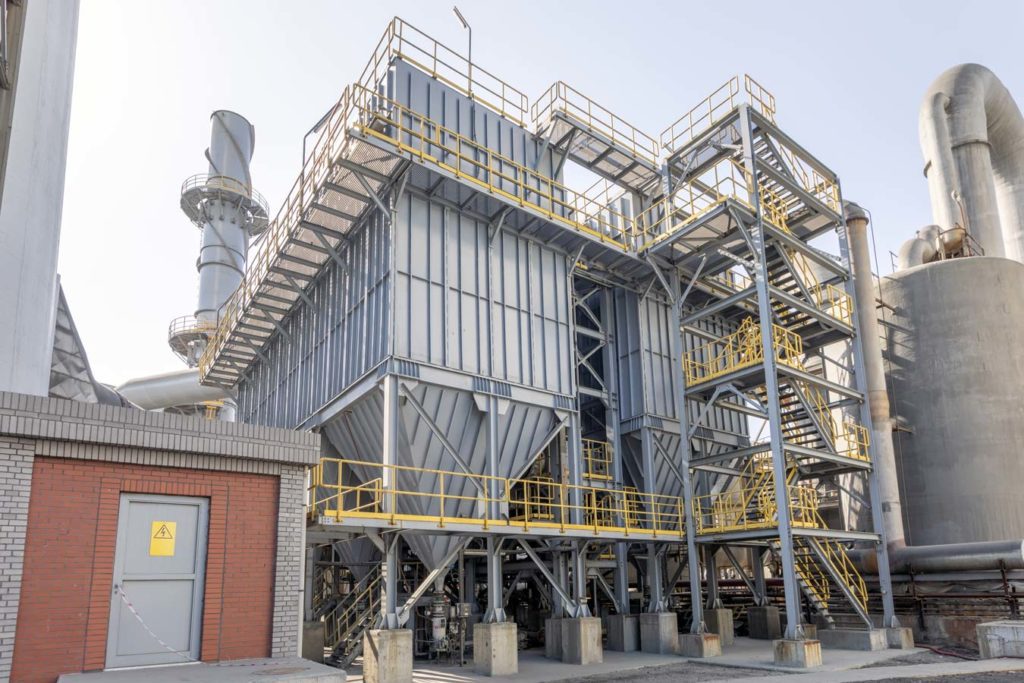The definition of a filter bag is very straightforward. A filter bag is a fabric “bag” that filters the air passing through your dust collection system, preventing particulate matter and emissions from entering the environment. These products are essential in reducing your plant’s environmental impact and keeping you compliant with environmental regulations. This piece will outline how a baghouse works and what some of the most common materials used for filter bags are.
How Does a Filter Bag Work?
Inside pulse-jet baghouses, individual bags cover metal cages that maintain their shape and structure. Dirty air enters the chamber from the side of the baghouse and passes through the filter bags. The bags prevent any solid debris and detritus from moving through while allowing the clean air to move up through the bag and exit the baghouse at the top. Debris falls off the bags to the bottom of the baghouse, where it is collected and disposed of.
During operation, dirt cakes up on the outside of the filter bags and is cleaned off using compressed air. Short bursts of compressed air blow through the bags, freeing accumulated dirt where it falls into the collection area at the bottom. Over time, the particulate buildup is too much for the pulse jets to shake free and the bag becomes blinded, meaning it no longer operates optimally and should be replaced.
Types of Filter Bags
The different types of filter bag materials affect the performance and characteristics of the bags, from maximum operating temperature to abrasion resistance, corrosion resistance, reaction to moisture, and more. Here are some commonly used filter bag materials and their related properties.
POLYPROPYLENE
Polypropylene is a standard filter bag material because of its excellent abrasion resistance. Additionally, polypropylene filters are well-suited to moist air filtering and have excellent resistance to alkalis and acids. However, the biggest shortcoming of polypropylene bags is that they have a low maximum operating temperature of around 170 degrees Fahrenheit (77 degrees Celsius), limiting the range of applications they are well-suited for.
ACRYLIC
Acrylic filter bags have some pros and cons related to the first material on our list. First, acrylic bags have a maximum operating temperature of around 265°F (130°C), making them better suited for high-temperature applications. However, that increase in temperature is a trade-off for a slight decrease in abrasion resistance and chemical compatibility.
ARAMID FELT
Aramid, short for aromatic polyamide, is a class of strong, heat-resistant synthetic fibers. Most people would recognize Aramid by the brand name Kevlar®. Filter bags made from this material are very abrasion resistant and can operate at consistent temperatures around 400°F (204°C).
FIBERGLASS
Fiberglass is a material that can withstand high temperatures, operating around 500°F (260°C), almost triple the operating temperature of polypropylene filter bags. This heat resistance widely expands the applications for fiberglass bags. Unfortunately, fiberglass is not very durable and has a lower resistance to abrasion than other entries on this list. Additionally, fiberglass does not work particularly well with alkalis or acids. Chemical-resistant finishes can increase fiberglass filter bag performance but also increase the cost.
PTFE/TEFLON™
Polytetrafluoroethylene (PTFE), better known by the brand name TeflonTM, is a synthetic polymer that can increase the performance of filter bags. A PTFE membrane on the exterior of felt or needled polyester bags offers additional performance benefits. The surface of the PTFE membrane has microscopic holes that allow air to pass through. Some PTFE filter bags can reach a high of 99.999% efficiency.
PTFE has a very low coefficient of friction, meaning it can decrease the amount of caking on the bag’s exterior, reducing the frequency of cleaning required. In addition, the compressed air used during cleaning causes wear and tear on the bags, so reducing the cleaning frequency increases the lifetime of the filter bag. This property makes this type of bag great for applications that have sticky or tacky dust.
It’s no shock that a premium price tag goes hand-in-hand with the premium performance of PTFE filter bags. At Baghouse America, we believe in improving the quality of the air we breathe and forging lasting, authentic relationships with our customers. To that end, we include PTFE filter bags with the setup of any new baghouse system at no additional cost.
Let’s Chat
We love to talk shop – let’s set up a time to chat about filter bags and baghouses and how our team can help you get the most from your system. We understand that each client is unique and needs unique solutions to their filtration challenges.
We are leading the way to zero emissions, and we would love to help your company reach its emission targets and help everyone breathe easier.

